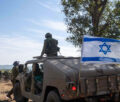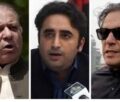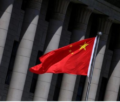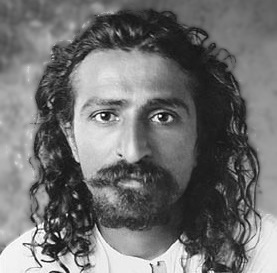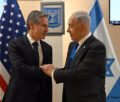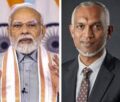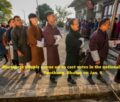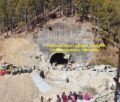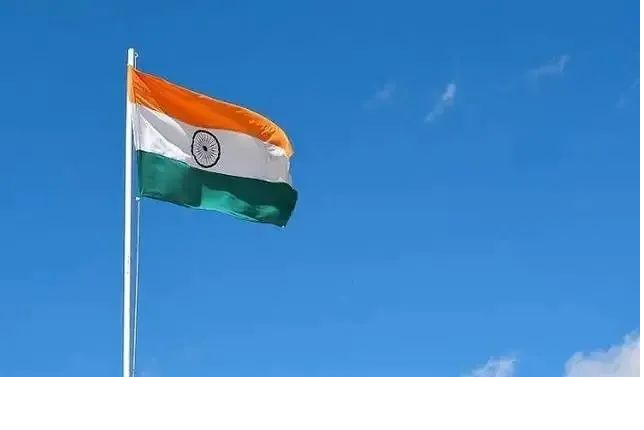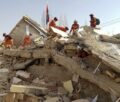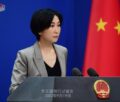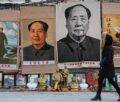Singh for upswing in Indo-Bangladesh ties

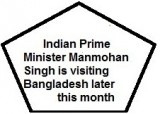 It should be fairly easy to travel to a neighbouring country, but not in South Asia where it is easier to travel to more distant parts of the world. Past hostilities, resentments, suspicions have long made the borders difficult to navigate for ordinary travellers. The situation may change in the future for connectivity has become the buzz-word in India-Bangladesh ties as the two governments seek to build greater connectivity in a host of areas.
It should be fairly easy to travel to a neighbouring country, but not in South Asia where it is easier to travel to more distant parts of the world. Past hostilities, resentments, suspicions have long made the borders difficult to navigate for ordinary travellers. The situation may change in the future for connectivity has become the buzz-word in India-Bangladesh ties as the two governments seek to build greater connectivity in a host of areas.
Over the past year and a half, India and Bangladesh has been working towards restoring those connections by managing the access through the border area, ending the disputes over the undemarcated border and the territory in adverse possession, power grid interconnectivity and reviving old links through the weekly village markets. India’s Prime Minister Manmohan Singh will visit Dhaka in early September to consolidate a series of agreements that have been negotiated by the two neighbours.
Bilateral ties between India and Bangladesh moved into a fast track after the newly elected Bangladesh Prime Minister, Sheikh Hasina visited Delhi in early January 2010. The two sides agreed to take up tangled and sensitive issues as well find ways to improve their economic relations. Dr Manmohan Singh’s September visit will show how far the two sides have gone in realising the assurances of that visit.
The two countries are expected to sign agreements that would implement a treaty signed in 1974 on the border. It was put in abeyance after the assassination of Sheikh Mujibur Rehman, the first Prime Minister of Bangladesh. The unresolved issues of the border have at times led firing across the border by the two border security forces. India and Bangladesh have a common border of about 4,156 kms, some 6.5 kilometres of which have not been demarcated. However, more complicated issue relates to the small pockets of land called enclaves that lie in each other’s territory. These enclaves are small islands that are completely surrounded by the other country’s territory.
 There are 111 Indian enclaves within Bangladesh territory, enclosing a total land area of about 17,258 acres, while the 51 Bangladesh enclaves with in India enclose 7,083 acres of land. Neither government has taken up any developmental work in their enclaves; only the largest Bangladeshi enclave has a regulated access to Bangladesh.
There are 111 Indian enclaves within Bangladesh territory, enclosing a total land area of about 17,258 acres, while the 51 Bangladesh enclaves with in India enclose 7,083 acres of land. Neither government has taken up any developmental work in their enclaves; only the largest Bangladeshi enclave has a regulated access to Bangladesh.
The two countries have agreed in principle to resolve the issue by exchanging their enclaves of the enclaves, or areas under adverse possession. The enclaves have been jointly surveyed and a headcount of the residents has been carried out.
There are about 51,000 people living in the enclaves. People in the enclaves have been given the right to reside in the country of their choice. It is unlikely that there would be a large scale transfer of population as most of them are not keen on moving from their land. India will lose some land in the exchange.
An agreement on the sharing of the waters of the Teesta River and the Feni River is also to be signed. The sharing of river waters has for long been a contentious issue with Bangladesh, the lower riparian state complaining that it was being starved of water of the common rivers. The agreement on sharing of the lean season flow of the Ganga River under the Ganga Waters Treaty in 1996 had removed a highly emotive issue in Bangladesh. The treaty, signed during Sheikh Hasina’s first term as prime minister, had changed the mood in the bilateral relations. But later changes in government brought back the old suspicions and resentments.
Bangladesh has two neighbours, India and Myanmar; it makes sense for Bangladesh to improve its economic ties with India. But ‘selling out to India’ is a charge that political parties often fling at each other in Bangladesh, which makes it difficult to take big decisions in the bilateral relationship. In December 2008, Sheikh Hasina’s Awami League won a resounding victory in the elections, bagging 263 seats in the 300-member Parliament. The decisive victory gave her the latitude to reach out to India.
The Awami League government showed its willingness to talk about such tangled issues as allowing transit through its territory to India’s north-eastern states as well as other sensitive issues like sharing of river waters and demarcation of the boundary. Dhaka also put a check on the free movement of Indian insurgent groups in Bangladesh, removing one irritant in the ties. India, on its part offered a line of credit worth US $ 1 billion, the largest it has offered any country with the exception of Afghanistan.
 The issue of transit has been bedevilled bilateral relations as Bangladeshi politicians have believed that it is the strongest leverage Bangladesh has with India as India needs the transit route for easy access to its northeastern region. However, none of the Bangladeshi leaders have been able to agree on the kind of returns they would want for allowing transit facility to India. Instead of talking about transit, which would involve upgrading roads and bridges in Bangladesh, officials of both countries have been looking at ways to utilise river movement. In a spirit of accommodation, Bangladesh allowed the one-time transit of oversized cargo of a power plant under construction in Tripura up the river through its Ashuganj port.
The issue of transit has been bedevilled bilateral relations as Bangladeshi politicians have believed that it is the strongest leverage Bangladesh has with India as India needs the transit route for easy access to its northeastern region. However, none of the Bangladeshi leaders have been able to agree on the kind of returns they would want for allowing transit facility to India. Instead of talking about transit, which would involve upgrading roads and bridges in Bangladesh, officials of both countries have been looking at ways to utilise river movement. In a spirit of accommodation, Bangladesh allowed the one-time transit of oversized cargo of a power plant under construction in Tripura up the river through its Ashuganj port.
The reopening of the age old border haats (weekly markets) in Meghalaya has built a mood of optimism in the border areas. The village markets had been shut down after the 1965 war with Pakistan (Bangladesh had been a part of Pakistan at that time). The haats allow trading of local produce at the border markets.
In the days before independence the major part of trade in what is now the border region used to take place within the area. Independence cut the ties as well as the railway lines, roads and the ferries and barrages that moved through the delta region. Road connectivity is expected to improve after India completes the construction of its integrated check post with modern customs and immigration and cargo processing facilities.
But India is often tardy in the implementation of its promises. It took a special thrust form the top leadership to remove the glitches in implementing the decisions taken for disbursing the line of credit. The Indian government will have to work hard to show the gains of connectivity within a short period or the mood of optimism in the bilateral relations can dissipate and become a political football in Bangladesh’s fractious politics
-By Shubha Singh
-
Book Shelf
-
 Book Review
DESTINY OF A DYSFUNCTIONAL NUCLEAR STATE
Book Review
DESTINY OF A DYSFUNCTIONAL NUCLEAR STATE
- Book ReviewChina FO Presser Where is the fountainhead of jihad?
- Book ReviewNews Pak Syndrome bedevils Indo-Bangla ties
- Book Review Understanding Vedic Equality….: Book Review
- Book Review Buddhism Made Easy: Book Review
- Book ReviewNews Elegant Summary Of Krishnamurti’s teachings
- Book Review Review: Perspectives: The Timeless Way of Wisdom
- Book ReviewNews Rituals too a world of Rhythm
- Book Review Marx After Marxism
- Book Review John Updike’s Terrorist – a review
-
-
Recent Top Post
-
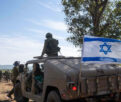 NewsTop Story
What Would “Total Victory” Mean in Gaza?
NewsTop Story
What Would “Total Victory” Mean in Gaza?
-
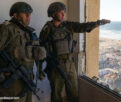 CommentariesTop Story
The Occupation of Territory in War
CommentariesTop Story
The Occupation of Territory in War
-
 CommentariesTop Story
Pakistan: Infighting in ruling elite intensifies following shock election result
CommentariesTop Story
Pakistan: Infighting in ruling elite intensifies following shock election result
-
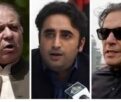 CommentariesTop Story
Proforma Polls in Pakistan Today
CommentariesTop Story
Proforma Polls in Pakistan Today
-
 CommentariesTop Story
Global South Dithering Away from BRI
CommentariesTop Story
Global South Dithering Away from BRI
-
 News
Meherabad beckons….
News
Meherabad beckons….
-
 CommentariesTop Story
Hong Kong court liquidates failed Chinese property giant
CommentariesTop Story
Hong Kong court liquidates failed Chinese property giant
-
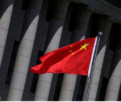 CommentariesTop Story
China’s stock market fall sounds alarm bells
CommentariesTop Story
China’s stock market fall sounds alarm bells
-
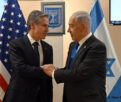 Commentaries
Middle East: Opportunity for the US
Commentaries
Middle East: Opportunity for the US
-
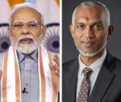 Commentaries
India – Maldives Relations Nosedive
Commentaries
India – Maldives Relations Nosedive
-
AdSense code


